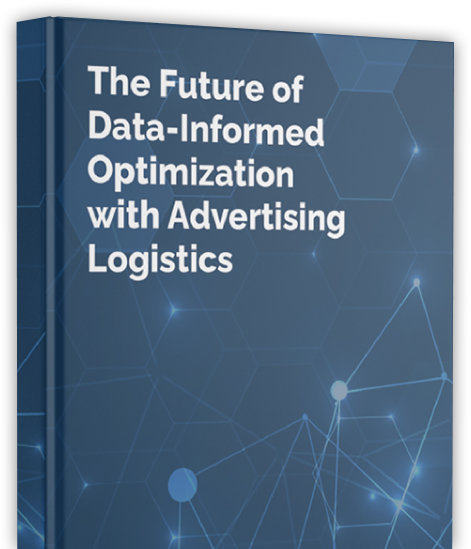Description
In this episode, we talk about how audience targeting will come full circle as 3rd party cookies are phased out. But it’s not all doom and gloom; contextual targeting is more relevant, timely and provides a greater degree of specificity, whereas 3rd party cookies can get stale and lack context. Find out how machine learning can be your competitive advantage in identifying the partners that will deliver the audience you are in search of.
Transcript
Tony Winders: Hello, and welcome again to another edition of On the SPOT with Stephen Johnston, Founder and CTO of PubWise. My name is Tony Winders. And today I’ll be putting Stephen On the SPOT about contextual versus audience targeting and why it matters. Stephen, welcome back to your show On the SPOT with Stephen. It’s always good to learn from you, I love putting you On the SPOT. And really my thought around discussing audience versus contextual targeting is kind of a subset of the demise of the cookie and where the industry needs to go with respect to its thoughts around targeting. And it leads into conversations about identity and what publishers and advertisers are going to do moving forward. But you and I chatted a little bit about the fact that we don’t see it as a cookie apocalypse so much as a cookie opportunity. So it’s along the lines of those threads.
Stephen Johnston: This is a deep pool of stuff. We have to figure out which slice we can take off of it in 15 minutes.
Tony Winders: I agree. When I say contextual versus audience targeting, what does that conjure up for you at the outset?
Stephen Johnston: Contextual versus audience, what I think of is context versus cookie. That is somewhat of a bias that I’m imputing in that. In general I think the audience would include context in cookie based audience definitions, if you wanted to get technical. But if we take it to that cookie versus context in terms of defining that audience, that is probably more of a digestible conversation in terms of, you can break it down into trends that are going on, what is the difference between the two, what are we going to get, what are we going to lose, what are we going to gain, what’s going to be different about that reality. Largely, the two big areas are that the cookie was widely applicable, but in my opinion, lower value. Whereas context is more narrowly applicable, but potentially higher in value, I feel like cookie targeting is the high fructose corn syrup of this whole thing. If you think about your diet, there’s nothing wrong with a cookie, but how many cookies are you going to eat? Your ratio of vegetables should be nine to one. That’s what it conjures up initially, to me. Those two things have been in play forever. Context has been around forever, cookies have been around for a long time. Now we’re just talking about rebalancing the scales between them. And I think everybody in the industry is going to have something to learn, something to gain, and something is going to be given up.
Tony Winders: For me, having come from ad network worlds where contextual advertising was table stakes, it seems a little bit ironic, like we’re going back in time, almost like a crutch. But that said, when you think of the cookieless future, what is the new targeting paradigm? Is it identifiers and what should we be thinking about?
Stephen Johnston: Contextual was out there 10, 15, maybe 20 years ago. We talk about endemic audiences, which has been this conversation and that is really a description of a highly contextual audience. So when people say, “I’m going to go buy endemic advertising,” they’re saying, “I’m going to go buy advertising for a thing that seems to logically relate to a group of people.” So if you’ve got a motorcycle rally in North Dakota, then Harley’s going to advertise it but Mattel is not likely to advertise some he-man castle that they’re selling with a toy or something. There’s not a match. People identify places where they contextually work, then the same thing is true on the web. And I think one of the big differences with the cookie approach, if you’ve ever gone to a company that’s doing a lot of targeted cookie advertising, you look at their wine subscription service. This is one that just blasts you forever, they’ll chase you around the whole web based on a cookie. So you put their wine subscription service in your cart, and then you abandon it. And for like a week, you get ads for that service. What’s interesting is, if you go back and you buy it, you’ll probably still get ads for a week. And the reason is that they have this cookie, it says that you’re interested in the product, and they have no more smarts around it. And that’s very different from contextual, where it’s more temporal. Contextual would say, “well, when they interact with something else related to wine, show them an ad for us, and show anybody coming along in that audience, this kind of thing.” And there’s likely actually room for both of those things to exist in the industry for a while. And as we learn more about contextual and how to layer it in, I think it improves publisher content that is contextual. A lot of content is being created by pulling in an audience, and then letting the cookies sort them out. I think that low value content will go away as well. We all may benefit tremendously from this entire thing as much as there’s a lot of teeth gnashing, as a player on the business side. I think the consumer is going to benefit, they will begin seeing more things related to what they’re currently researching content will be properly incentivized to be related to things that are valuable, not just related to getting a person to have an emotional reaction click, that’s the part I’m looking forward to is the change in incentives all around.
Tony Winders: I always thought of what you call “cookie” or “audience targeting” or “behavioral targeting”, as being the more sophisticated, better evolution because you actually know who that person is, where they’ve been, what their interests are, you know something about them.
Stephen Johnston: You’re saying that cookie targeting was the better one because you know something about them? So, you know something about them in the past. You don’t have a very good stack rank of how that cluster of things now ranks currently in terms of their interest. But contextual does, it is the thing that they’re doing right now. So if your cookie profile says they’re interested in twenty-two things, which five of those have gone away? Well, are you aware of the five areas of interest they never interact with any content related to? The two of them together are far more powerful, and remember, we have context, we have cookies, and cookies really relate to third-party data. And that’s this idea that, you know something about a person, you know something about their history, and some third-party is pulling it all together in this profile. We can still learn things more akin to a cookie about our first-party audience and provide that information, in addition to the context, assuming we’re doing things necessary to build the relationship to collect that level of data. Which again, creates value to the people who do have valuable services. Or say, there’s probably this whole analysis of what sort of content should you be in? Well, if you’re all in for context, then your content should be things that allow people to indicate their interests and commercial interests, a product search, product recommendation maybe gets more powerful going forward. I’m just surmising, but that sort of information is comparable to first-party it’s just not going to be quite as ubiquitous, it’s going to be harder to gather, it’s going to have more value, because it’s going to be more rare. But it can still be provided and it can still provide that broader context. It’s why a company like Google or Facebook might really enjoy the idea of cookies going away, because they’ve got a crap ton of first-party data across a super wide set of topics that they can use as their own identity profile. And I think that has challenged everybody outside of the walled gardens of, okay, how do we build up that? So you’re talking about people building consortiums, or any sort of cooperative thing, single sign-on services, email based identifiers where it’s first party and it’s an email. I don’t think we’ve seen the end of the creativity on that side, trying to find ways to get pools of data that aren’t technically third-party, or that don’t fall under GDPR regulations.
Tony Winders: Even if you have the first-party data, you still need the users permission to use it for targeting, right?
Stephen Johnston: Not everywhere. California would say that if you sell it, then you need it, you need some sort of permission. GDPR would say if it’s PII, and their definition of PII is pretty broad, but they don’t consider the idea that someone is interested in toothpaste as PII. Now, the identifier itself. The fact that I can’t answer that question with a yes or no, is part of the whole problem, or at least the challenge.
Tony Winders: Are you familiar with other targeting proxies in the wake of the cookie? What about identity, and FLoC and some of these other initiatives that are floating around? Are those relevant to this conversation?
Stephen Johnston: Absolutely.
Tony Winders: If you can just give any insight on those kinds of identities.
Stephen Johnston: So, FLoC is “Federated Learning of Cohorts”. And it is a process that creates groups of non identifiable individuals inside of cohort groups of interest, and then federates them across multiple sites. The primary sticking point is, it requires a benevolent Lord, to sit in one key component of it and have a lot of power and deserve a lot of trust. Google says,
“Well, our browser could be that.” So they have some patents in the space around that. They’ve just floated some concepts where they name this “to be named” entity. It’s interesting. I think that there’s a lot of distrust, and there’s a lot of giving Google more. A lot of people just don’t trust them.
Tony Winders: There’s competitive reasons too, Microsoft and Apple aren’t about to endorse that standard.
Stephen Johnston: Yeah. So there’s a lot of fighting over it. I think something like that comes about, but it is probably more of an industry group, prebid wants to do some things in the space, and they may be a more broad industry organization. But to some degree, they’re also positioned as “not the walled gardens,” and still have a couple of large entities that are shaping things there, too. We’re involved in that process ourselves as heavy contributors to pre-bid. We’re definitely in that space, where there’s a patchwork of solutions, and the cookie was ubiquitous. It was easy, it was technically approachable, you could append it with all this information, you could get to it, it was easy. There’s a reason that everybody liked it, there was a reason it was used heavily, because it was easy and it was pretty valuable. It’s like the way that we’re building solutions at PubWise, we’re not trying to name a winner. We’re trying to help publishers determine which one of these solutions, as they pop-up, actually works. And for us, I see that as an opportunity. You’re going to get approached by 100 different companies over the next year, they’re gonna say, “X, Y, and Z.” How prepared are you to measure their effects? The vast majority of publishers are not, on a scale of one to five for maturity, they’re a one. My sense is that even the most advanced publishers are only at three or four.
Tony Winders: Well, how does PubWise get them there? What are you going to do to help them measure it more effectively?
Stephen Johnston: There’s always analytics and just simply providing an easy path to: I turned this on, and then did I made more money? It starts there, but it then starts to be: does this solution work with this audience? Does this work for that audience? When our traffic comes in from this source, does one solution work better than another? And that’s where, with machine learning and some of our proprietary and patented algorithms are able to start to align those decisions to a place that can provide the most value. My answer would be, we’re going to do the things you would do yourself, we’re just going to do them thousands of times a day and millions of times a month, instead of it being a week-long project that takes three people and five hours of discussion to go through and then you only get one of those answers.
Tony Winders: Well, this has been fantastic as always, just to recap some of the highlights, what I heard was that context and the cookie can work powerfully together, especially in this interim phase, that we’re in an unfolding time of change in the industry, and that’s okay. There are going to be a lot of creative solutions coming out and potentially the consumer comes out ahead in the end, which would be a nice byproduct for everyone. And obviously you’re applying your resources to help publishers figure it out and advertisers for that matter. But any parting shots to add to that before we break?
Stephen Johnston: Yes, I think that instead of trying to find a winner, that people should be looking to and preparing for how they are going to find the winners, because there’s going to be a lot of solutions. Nobody has a crystal ball. You don’t know what comes out tomorrow. So start preparing your organization to be measuring these things, not reading slick marketing material, and then just going with whoever’s font is bigger. That would be my parting shot, be prepared to measure this, not soak all this information up and say, “Well, these are the three we’re going to pick for the next few years whether they work or not.”
Tony Winders: That’s a great place to leave it for today. I appreciate you letting me put you On the SPOT Stephen. This has been On the SPOT with Stephen Johnston, Founder and CTO of PubWise. I’m Tony Winders, and we look forward to seeing you next time.





